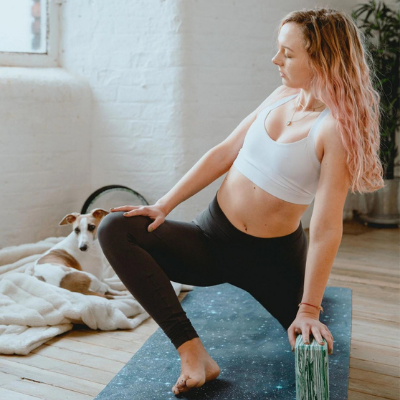With everything that’s happening in the world right now, you’d be forgiven for feeling downright demoralised and depressed. And even without Covid-19 or war breaking out in eastern Europe, life back home remains frantic, exhausting, and stressful at the best of times. So, we could all do with a bit of Hygge! But what’s the basis of the bestselling Little Book of Hygge, described as the Danish way to live well and feel happier?

What is Hygge?
Pronounced Hoo-ga, Wikipedia defines Hygge as ‘a quality of cosiness and comfortable conviviality that engenders a feeling of contentment or wellbeing’ and is often regarded as the defining characteristic of Danish culture.
Simply put, Hygge focuses on enjoying the simple things in life like friendship, relaxation, nature, and laughter. Over here in the UK, we may think of it as slow living, or living a more mindful life with gratitude.

What is Slow Living?
In today’s climate of being available twenty-four seven and having an abject fear of missing out, it’s easy to burn out, get stressed and most importantly, not fully enjoy our day-to-day life.
Too many of us postpone enjoyment to a future date. You know, that far off day when we’ve achieved all of our goals or finally completed the never-ending to do list. Problem is that whilst we’re sucked into this ‘busy’ culture, we never actually enjoy what we’re doing in the present moment. That leads to unhappiness and ultimately an array of mental health problems.
More and more studies are proving that adopting a slower, mindful way of living is much better for the soul. This philosophy rejects the notion that faster is always better. A great analogy is fast food. It’s quick, convenient and you get an instant hit of pleasure but that rapidly dissipates, you still feel hungry and unsatisfied, seriously thirsty, even constipated and in the long-term, it’s totally rubbish for your insides, leading to all manner of illnesses like cancer and heart disease. But if you take the time out to cook a fresh, healthy meal from scratch, it’s enjoyable, tastes so much better, gives you a sense of achievement and feeds your body nutrients and vitamins to help it thrive.
So slow living is all about reprioritising and about making time and space for those things that matter and nourish the soul. Its also about living intentionally, not just letting our external circumstances control us, for example cooking a meal as opposed to cramming in a burger and fries between back-to-back appointments.
Slow living is about bringing back our attention to daily life. When we’re living fast, we barely take anything in, because we’re so overwhelmed. Changing what you pay attention to though can completely transform your life. But this can be one of the hardest things to do. It may require you to turn off your Facebook notifications. Or put your phone into a different room at bedtime. It may mean you skip a night of Netflix each week to go out for dinner with your partner and reconnect with them instead.

Skandi Yoga
Yoga is something that’s very much in sync with slow living and getting the Hygge back into your life. It focuses the mind on the present moment as well as being calming, relaxing and great for physical health too.
There are many different styles of yoga, but Hatha Yoga is particularly good for enhancing slow living. This is calming yoga at its best because the practise slows your breathing, balances the body through poses (asanas) and resets your mind with relaxation and meditation.
Research has shown that Hatha Yoga helps to manage and even relieve anxiety, stress, and depression, reduce muscular tension, improve strength, endurance, posture and balance, aid sleep and support healthy habits.
Hatha Yoga Poses
A Hatha Yoga workout usually includes traditional stretching poses like:
- Vrikshasana (Tree Pose)
- Tadasana (Mountain Pose)
- Adho Mukha Svanasana (Downward Facing Dog Pose)
- Virabhadrasana (Warrior 1 Pose)
- Balasana (Child’s Pose)
- Chakravakasana (Cat-Cow Pose)
- Uttanasana (Standing Forward Bend Pose)
- Trikonasana (Triangle Pose)
- Bhujangasana (Cobra Pose)
If you’re new to Hatha Yoga, we’d highly recommend that you check out some local classes where you can receive helpful guidance from a qualified yoga instructor.

What Equipment Do I Need for Relaxing Yoga?
The great thing about Hatha Yoga is that you don’t need much to get going. It’s always a good idea to have a non-slip mat like the Yogi Bare Natural Rubber Extreme Grip Yoga Mat (available in green, blue, red, black, and grey) to avoid slips, trips and injuries.
Then as you progress through your yoga practise and wish to deepen your poses or take on more challenging ones, invest in some yoga blocks too. Yogi Bare blocks offer excellent support and have been have created from eco-friendly, sustainable materials. Choose from the classic Wooden Blocks or Foam Blocks or how about trying out some Downward Duck Blocks? These are beautifully crafted from disregarded flip flops found in Kenya’s waterways!
If you liked this article, we think you’ll like How Many Yoga Blocks Do You Need as a Beginner?

Leave a comment